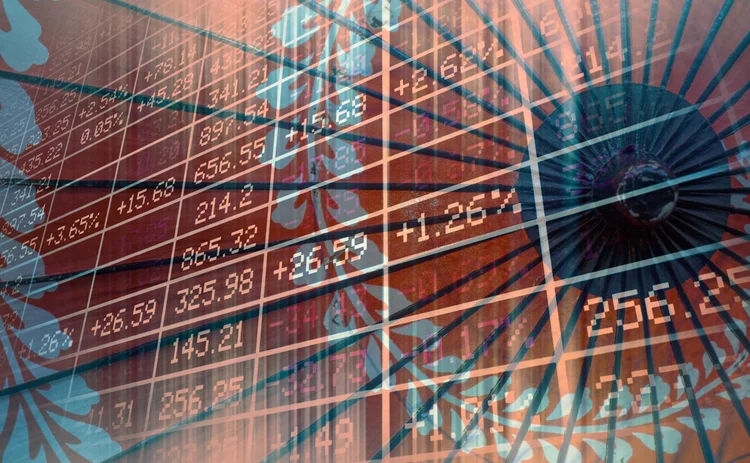
Mifid fuels Asian equities e-trading surge
Firms with European clients find low-touch channels help to prove best execution

The move towards electronic trading of equities in Asia has been accelerated by Europe’s second Markets in Financial Instruments Directive, according to market participants, while cost pressures on the buy side are also fuelling the trend.
“Mifid has almost been like a jab in the back to get people moving forward with electronic usage,” says Ben Valentine, a managing director and head of electronic execution for Asia at Citi. “So if one isn’t using electronic or only using it for a small piece, then they might be scrutinised on why they don’t lean on it.”
Valentine estimates more than a half of all notional volumes in Asia now go through low-touch channels, where orders are routed automatically. He adds that electronic trading volumes were enhanced by the uptick in volatility in the first quarter of 2018.
Nonetheless, five different dealers have told Risk.net they expect the switch to e-trading to continue apace regardless of market conditions.
Societe Generale Corporate and Investment Bank estimates trade flowing through such channels made up two-thirds of notional equity volumes executed in Asia between January and April. This compares with just a third during 2017. Stephane Loiseau, head of cash equities and global execution services for Asia at SG CIB, says the bank’s algorithmic equities trading has grown 50% in the first four months of the year.
Mifid II, which came into force on January 3, introduced best execution requirements for banks and asset managers in Europe. This means demonstrating to clients the trading venue or counterparty chosen has offered the best available price, rather than just being selected on the basis of an ongoing commercial relationship.
Although Mifid II is a European piece of legislation, its scope is far-reaching, and as such, Asian-domiciled funds that deal with underlying European investors also come under its purview.
“What we have found is that many of the long-only asset managers – the larger fundamental investors who have a lot of orders to place – have become burdened with trying to prove why they sent each one of their orders to a specific broker,” says Hani Shalabi, co-head of equity execution for Asia-Pacific at Deutsche Bank. “Mifid II increases the need for the buy side to prove why they sent the order to someone else, [that] this is not related to a trading bias.”
The best-selection conundrum is driving the move to electronic trading
Stephane Loiseau, SG CIB
A high-touch approach, where dealers try to cross the client order with flow from their own books or other clients, or slice it into the open market in small sub-lots, makes it difficult to conduct transaction cost analysis or measure market impact.
“The best-selection conundrum is driving the move to electronic trading,” says SG CIB’s Loiseau. “Under that approach, electronic trading becomes quite attractive. That is because you are basing your decision on data, which allows back-testing, data analysis and it gives the right consistency and sophistication thanks to the tools that are available. These allow you to make changes as you go along, [which] ticks the boxes of best selection.”
Long-term trend
However, market participants emphasise the industry was already shifting towards electronic trading before Mifid II, driven by some of the same factors as other markets – including advances in computing power, data storage and trading analytics and algorithms. A case in point was the Hong Kong Stock Exchange closing its open outcry trading hall in October 2017.
“Technology is changing the face of trading and it is imperative banks embrace the shift to electronic [trading],” says Tony Shaw, head of institutional and wealth sales for Asia-Pacific at HSBC. “Our heavy investment in technology reflects this shift, as we increasingly rely on it to support all stages of trading. Today’s financial climate generates an increased need for transparency, accuracy and track record, so the surge in electronic trading isn’t unexpected.”
A report by financial markets intelligence firm Greenwich Associates shows large institutions had already cut the share of trading volume executed through high-touch from 65% in 2015 to 58% in 2016. Greenwich says major brokers are investing heavily in their electronic trading platforms, and even smaller firms that historically have not been active in electronic trading are now viewing it as an integral part of their execution platform.
Vijay Chander, an executive director at the Asia Securities Industry and Financial Markets Association, points out that the shift to e-trading has occurred even for instruments and firms – such as domestic Asian asset managers – that are not in scope for Mifid II.
“The number of in-scope instruments [in Asia] is few and far between, and if two Asian firms are trading with each other, without a European nexus, then there is no reporting obligation that arises. But Asian firms have found they are much better off moving to platforms. This is certain to be welcomed by regulators, which want the bright light of transparency to be shone into every corner of the financial markets,” says Chander.
Over the last six months, the buy side has faced cost pressures because of increased competition arising from the move to passive investing and declining fees. Electronic is the natural fit
Ben Valentine, Citi
Loiseau at SG CIB says the range of participants moving into low-touch execution is broadening beyond the trading firms that have used direct market access for some time, to include asset managers, hedge funds and private banks. Moreover, the universe of instruments traded electronically is also widening.
“You have the asset managers who are well versed in foreign exchange and equities and are expanding across assets. As they make the move, they are using some of the techniques they have learnt in their existing asset classes. So for example, they are using more and more electronic techniques as they move on to listed derivatives,” says Loiseau.
Several sources say margins at asset managers were already tightening before January 2018. For European-facing firms, the burden of demonstrating best execution to clients can only exacerbate the problem.
“Over the last six months, the buy side has faced cost pressures because of increased competition arising from the move to passive investing and declining fees. Electronic is the natural fit,” says Citi’s Valentine.
Shalabi at Deutsche says the more buy-side firms automate smaller orders, the more their traders are able to focus voice-trading efforts for the larger tickets that cannot be traded electronically without excessive market impact.
Only users who have a paid subscription or are part of a corporate subscription are able to print or copy content.
To access these options, along with all other subscription benefits, please contact info@risk.net or view our subscription options here: http://subscriptions.risk.net/subscribe
You are currently unable to print this content. Please contact info@risk.net to find out more.
You are currently unable to copy this content. Please contact info@risk.net to find out more.
Copyright Infopro Digital Limited. All rights reserved.
As outlined in our terms and conditions, https://www.infopro-digital.com/terms-and-conditions/subscriptions/ (point 2.4), printing is limited to a single copy.
If you would like to purchase additional rights please email info@risk.net
Copyright Infopro Digital Limited. All rights reserved.
You may share this content using our article tools. As outlined in our terms and conditions, https://www.infopro-digital.com/terms-and-conditions/subscriptions/ (clause 2.4), an Authorised User may only make one copy of the materials for their own personal use. You must also comply with the restrictions in clause 2.5.
If you would like to purchase additional rights please email info@risk.net
More on Regulation
Credit spread risk: the cryptic peril on bank balance sheets
Some bankers fear EU regulatory push on CSRBB has done little to improve risk management
Credit spread risk approach differs among EU banks, survey finds
KPMG survey of more than 90 banks reveals disagreement on how to treat liabilities and loans
Bowman’s Fed may limp on by after cuts
New vice-chair seeks efficiency, but staff clear-out could hamper functions, say former regulators
Review of 2025: It’s the end of the world, and it feels fine
Markets proved resilient as Trump redefined US policies – but questions are piling up about 2026 and beyond
Hong Kong derivatives regime could drive more offshore booking
Industry warns new capital requirements for securities firms are higher than other jurisdictions
Will Iosco’s guidance solve pre-hedging puzzle?
Buy-siders doubt consent requirement will remove long-standing concerns
Responsible AI is about payoffs as much as principles
How one firm cut loan processing times and improved fraud detection without compromising on governance
Could one-off loan losses at US regional banks become systemic?
Investors bet Zions, Western Alliance are isolated problems, but credit risk managers are nervous







